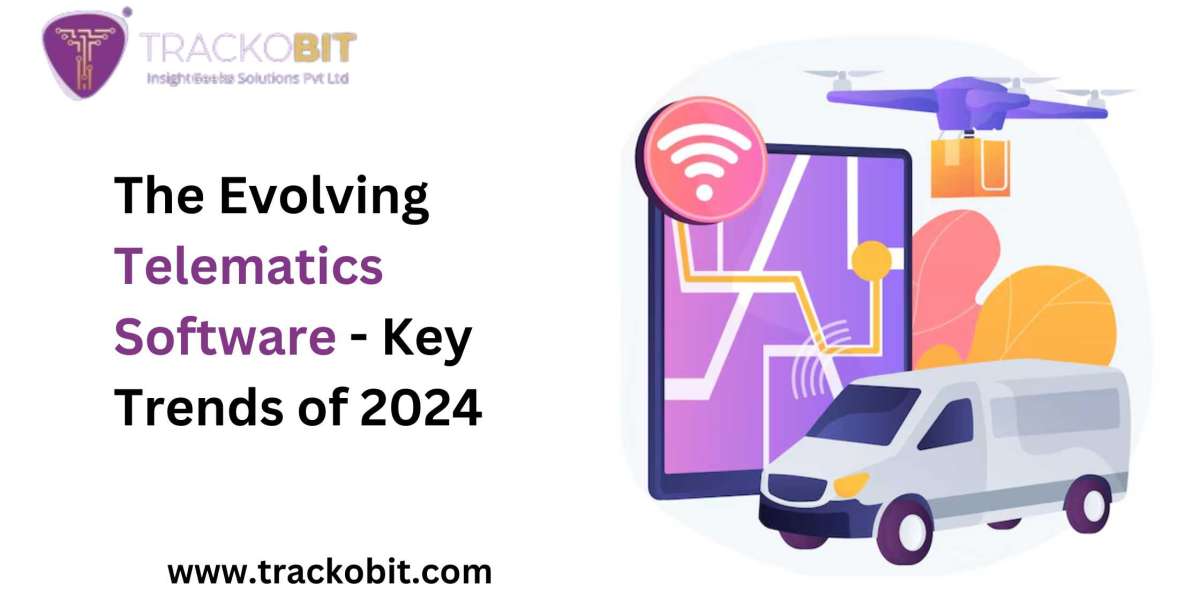There’s no doubt that the telematics industry has evolved into the fleet management industry. From tracking deliveries to monitoring driver behavior, telematics software has transformed fleet management.
But what's next? Dive into the key trends shaping the telematics industry, from artificial intelligence to a focus on sustainability.
Telematics has emerged as an essential requirement for those involved in fleet operations or purchasing a private vehicle. The ability to track the location of your assets offers a great sense of security and peace of mind.
So without any delay let’s get started but before we get into the trends quickly let’s unfold what telematics is.
What is Telematics?
Telematics is a field that combines telecommunications and informatics to provide a wide range of services and applications, particularly in the context of vehicle and fleet management. It involves the use of GPS technology, telecommunications, and onboard diagnostics to monitor and manage vehicles remotely.
FACT TIME: The telematics market is estimated to be valued at around USD 48.10 billion in 2024 and is expected to grow to USD 77.64 billion by 2029. Growing at a CAGR of a staggering 10.05%, the telematics industry is sure to achieve predominance in 2024 |
What are the trends in the Telematics Industry?
We are already into 2024, this new era has already brought in new possibilities and opportunities for transformative change. Likewise, telematics will surely redefine the automotive sector alongside the rise of autonomous driving and electric vehicles. ‘
Let’s understand the latest telematics trends that are already dominating 2024 and the coming years to help you stay ahead of the curve.
Integration of AR AND VR
Artificial intelligence in telematics is already enhancing its value proposition with features such as impact and motion detection, as well as determining driver fatigue. However, the emergence of technologies like AR and VR is anticipated to enhance user experience and transform how fleet companies engage with vehicular data.
Virtual reality can create 3D maps for improved visualization, assisting fleet administrators in better routing and aiding drivers in navigation. When combined with telematics, AR Heads-Up Displays can display crucial information or warnings on the windshield, promoting safer driving practices. VR can provide a three-dimensional perspective on vehicle performance, further enriching the telematics data.
The possibilities that AR and VR offer to current telematics systems are limitless, making them more user-friendly and adaptable to the changing requirements of the automotive industry.
5G Connectivity
In 2023, the launch of 5G was highly publicized, but in 2024, the focus will shift to the widespread adoption of 5G. The implementation of 5G will result in significant advancements and enhancements across various telematics sectors.
With its rapid data transmission and reduced latency, 5G will enable more precise data-driven decision-making processes. Real-time analytics will become seamless, ensuring uninterrupted vehicle communication. The fleet industry will benefit from increased accuracy and speed, leading to quicker decision-making and improved responsiveness.
Sustainable Business Operations
The emergence of electric fleets and self-driving vehicles is driving a move toward sustainability in the automotive industry. However, for businesses unable to transition to electric vehicles, telematics offers a viable solution to conserve resources and establish sustainable business practices.
Through efficient route planning and live navigation, telematics can assist fleet companies in minimizing emissions and fuel usage. This will enable them to play a part in environmentally conscious fleet management and achieve cost savings. Therefore, regardless of whether companies embrace electric vehicles or not, telematics is poised to remain and expand in significance
Integration with IoT (Internet of Things)
Telematics systems are increasingly integrated with IoT devices, enabling more comprehensive data collection and analysis. This allows for better monitoring of vehicle health, driver behavior, and environmental conditions.
Cybersecurity
As telematics systems become more connected, the need for robust cybersecurity measures increases. Protecting data from cyber threats is a growing concern, leading to the development of more secure telematics solutions.
Regulatory Compliance
Compliance with regulations is becoming more critical. Telematics solutions are being developed to help businesses comply with various local and international regulations, such as electronic logging for hours of service (HOS) and environmental regulations.
Summing Up
2024 has already been very remarkable especially when it comes to exciting advancements in telematics systems. These trends have not only opened new ways for fleet management companies to grow businesses but also have enhanced visibility and efficiency.
The emergence of smart cities and related developments is evident enough to help us understand how rapidly the world is advancing. Likewise, the future of telematics will likely become even more integral to improving safety applications, efficiency, and overall vehicle management.
Get a step ahead with TrackoBit’s Video Telematics Solutions; this comprehensive solution offers a 360° visual coverage of your fleet, coupled with features such as route planning solutions, fuel management systems, sim-based tracking, and much more.
Excited to know more?
Schedule a free demo today!
Source :The Evolving Telematics Software – Key Trends of 2024







